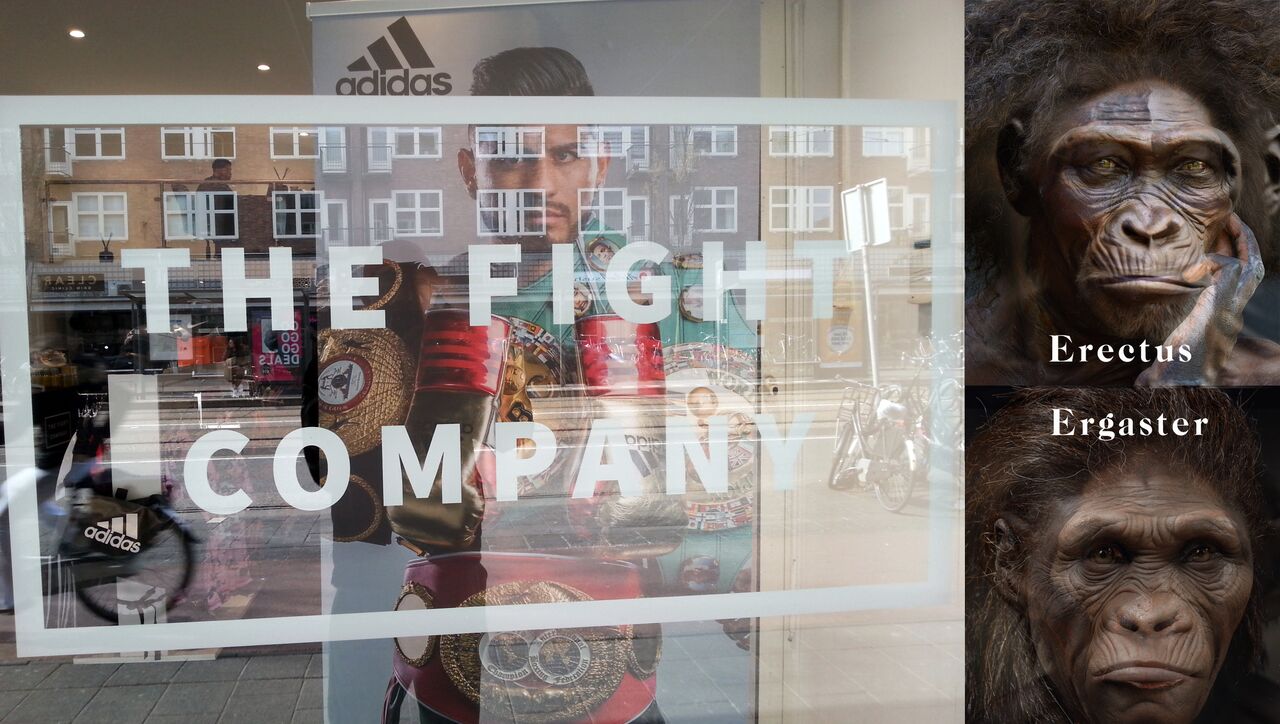MonsterCode
Encoding thousands of years of human and elephant evolution in the urban landscape of Amsterdam West.
Excerpts gleaned from a series of MonsterCode experiments in the Netherlands, including Strandlab and Summer Sessions in Almere and Creative Coding in Amelisweerd.

Not only was his (Aboriginal elder Paddy Roe) knowledge not reproduced in books like the ones he nevertheless wanted to write with me, but it had nothing to do with authorship. Knowledge didn’t originate with individuals, and the concept of mind was irrelevant. Knowledge was on the outside; it was held in ‘living Country’. And humans had to get together to animate this knowledge.Stephen Muecke, Reading the Country
In MonsterCode, monster refers to the imagination and code to encoding. This project focuses on encoding information directly into the environment, inspired by techniques for sharing and consolidating knowledge found in oral cultures (see Memory Practice). Invoking the power of imagination and storytelling, we connect facts or narratives with durable features ('hooks') in the landscape. These can be large landmarks or smaller features, like a shop, letterbox, or tree. Things that might change, but will stay put for weeks, and preferably years, at a time.
The practitioner’s world becomes filled with new layers of liveliness; walking to the bakery or office, their surroundings are overlaid with stories. Rather than storing information in books, or computers, it is placed in the landscape. A practitioner could walk through the evolution of early humans, a catalogue of poisonous plants, or anything else they might want to 'encode' in their surroundings. And once one gets started, the urge grows to build and extend these worlds; adding further layers of detail.

The human hereditary line splits from gorillas at an eerie vitamin store 8.5 million years ago, and splits from the chimpanzees about a block further, at the toy shop. Orrorin tuchenensis emerges at the Aladdin dried fruit and nut shop on the corner, just over six million years ago. Only a few uncovered bone fragments hint at their presence in the depths of time. Our common ancestry remains unclear. Some scientists argue they are part of the chimpanzee evolutionary branch, some say the human branch. But as fruit and nut-eaters, they seem at home in this dried fruit and nut shop. As I walk down the road, Ardipithecus rummage through cookware in the utensils store.
The street has six blocks. Its unknowing pedestrians transect six million years, a million years per block. What was once my route to the supermarket is now an epic journey through human evolution. At the halfway point, in the deep, dark grotto of a Turkish diner, a Homo habilis family feast fervidly on bone marrow. Their shadowy contours betray the first known use of stone tools, used to crack open the bones of carcasses left by lions and other big predators on the savanna. At Fight World, the kickboxing supplies shop that never has any customers, Homo ergaster and Homo erectus appear as sparring partners, wearing fabulously colourful trousers and bright red gloves. Continuing my walk, I pass a few other ancestors, until, at the very end of the street, we appear. Homo sapiens occupies the very last building – a cheap-looking nail salon. That is us, just a flicker in time.
A few blocks back, behind an Australopithecus couple wandering the orange savannah of the Money Transfer store, ancient predecessors of the modern elephant linger around a watering hole, their tusks curving downward. Could I also add elephant evolution to the timeline? The shopping street is too short to hold the entire evolutionary tree of 167 elephant species, but I populate it with the 16 European elephant species currently known. From Prodeinotherum bavaricum at the casino, to Platybelodon in the Money Transfer savannah, to the miniature mammoths of the Mediterranean spread throughout the shopping street, whose skulls may have inspired myths of the Cyclops. Compiling the elephants into the walk is an ongoing effort, finding references to species across sources, adding their details to the street. Across six blocks, hominids and proboscidae coexist, but the elephant traces are often so limited that there is not a clear date of when they emerged or disappeared; their presence remains nebulous.
For a self-guided experiment, see MonsterCode fieldnotes.
The timeline gains strength through accumulating layers of detail. I am doing this on my own, in my neighbourhood, over the course of a few months – unlike the Inca ceques, the ceremonial roads of the Pacific islands, and Europe’s forgotten neolithic processional causeways and henges that were populated over centuries. The strength of these communal spaces must have been impressive, connecting minds across time.
A timeline like this is streamlined for noticing relations, seeing and synthesising non-linear patterns. It adds structure to a great variety of strands of thought. Like a geocortex, this practice extends thinking beyond the body. The ancestors and elephants tie me to this environment, as they become more alive.
Looking back from the nail salon where Homo sapiens sit to have our nails done, it is humbling to see how short our own existence is in this little shop, when compared to the six blocks stretching into the distance
🐘
Further reading & references